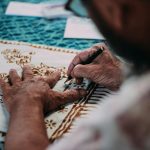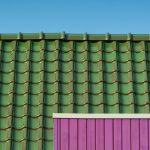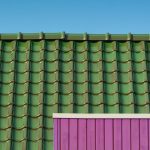Are you curious if real silk fabric can be made waterproof? Well, the answer might surprise you.
In this article, we will delve into the properties of real silk fabric and explore the techniques used to make it waterproof. We’ll also discuss the challenges faced in this process and the various water-resistant treatments available for silk.
By the end, you’ll have a clear understanding of the pros and cons of waterproofing real silk fabric.
So, let’s dive in and discover the possibilities!
Table of Contents
The Properties of Real Silk Fabric
Real silk fabric is known for its unique properties. When it comes to the properties of silk fabric, there are a few key characteristics that set it apart from other fabrics.
Firstly, silk is known for its soft and smooth texture, which feels luxurious against the skin. Additionally, silk has excellent breathability, allowing air to circulate and keeping you cool in warm weather. This natural fiber also has great moisture-wicking properties, absorbing moisture from your body and keeping you dry.
Another benefit of using silk fabric is its hypoallergenic nature. Silk is naturally resistant to dust mites and allergens, making it a great choice for those with sensitive skin or allergies. Furthermore, silk is known for its durability and strength. Despite its delicate appearance, silk is actually quite strong and resistant to tearing. This means that silk garments and accessories can last a long time with proper care.
In terms of aesthetics, silk fabric has a beautiful sheen that adds an elegant touch to any outfit or home décor. It also takes dye exceptionally well, resulting in vibrant and long-lasting colors.
Overall, the properties of silk fabric make it a versatile and desirable material for a wide range of applications, from clothing and bedding to upholstery and drapes.
Understanding Waterproofing Techniques
To achieve waterproofing, understanding various techniques is crucial. When it comes to silk, a delicate and luxurious fabric, waterproofing it may seem like a challenge. However, with the right techniques, silk can indeed be made waterproof, offering numerous benefits.
Here are some key techniques and the advantages of waterproofing silk:
-
Coating: Applying a waterproof coating to silk fabric can create a protective barrier that repels water and prevents it from seeping through. This technique is commonly used in raincoats and outdoor gear made from silk.
-
Chemical treatment: Treating silk with water-repellent chemicals can enhance its ability to resist water. This method is effective in maintaining the fabric’s natural drape and softness while making it water-resistant.
-
Lamination: By bonding a waterproof membrane to silk fabric, lamination creates a durable and fully waterproof material. This technique is ideal for producing high-performance silk garments and accessories.
The benefits of waterproofing silk include:
-
Protection: Waterproofing silk ensures that the fabric remains unaffected by water, keeping it dry and preserving its quality and appearance.
-
Versatility: Waterproof silk can be used in a variety of applications, from fashion to outdoor and sportswear, allowing for stylish and functional designs.
-
Durability: Waterproofed silk fabric is more resistant to stains, spills, and environmental factors, making it longer-lasting and easier to maintain.
Challenges in Making Silk Fabric Waterproof
When it comes to making silk fabric waterproof, you may encounter some challenges. While silk is known for its luxurious feel and natural sheen, it is not inherently waterproof. However, with advancements in textile technology, there are alternative materials and techniques that can be used to make silk fabric water-resistant or even waterproof.
One challenge in making silk fabric waterproof is maintaining its delicate texture and appearance. Traditional waterproofing methods often involve coating the fabric with a layer of synthetic chemicals, which can alter its natural properties and compromise its aesthetic appeal. Additionally, silk fabric is highly absorbent, which makes it difficult to create a barrier that prevents water from seeping through.
To overcome these challenges, researchers have been exploring alternative materials and techniques. For example, nanotechnology has shown promise in creating water-repellent silk fabrics. By coating the silk fibers with nano-sized particles, a protective layer can be formed without affecting the fabric’s texture or appearance. Other approaches involve incorporating natural or synthetic fibers with inherent water-repellent properties into the silk fabric, such as blending it with polyester or using fabric finishes that create a hydrophobic surface.
While the journey to making silk fabric fully waterproof may still have its obstacles, advancements in textile technology and the use of alternative materials offer promising solutions. With further research and development, it may soon be possible to enjoy the elegance of silk while also benefiting from its waterproof properties.
| Challenges in Making Silk Fabric Waterproof | ||
|---|---|---|
| Challenge | Description | Possible Solutions |
| —————– | ——————————- | ————————————————— |
| Delicate Texture | Coating may alter appearance | Use nanotechnology for water-repellent coatings |
| Absorbency | Difficulty in creating barrier | Blend silk with polyester or use hydrophobic finishes |
| Maintaining Aesthetic Appeal | Synthetic chemicals may compromise texture and appearance | Explore natural fiber blends or alternative coating methods |
Exploring Water-Resistant Treatments for Silk
One way researchers are exploring water-resistant treatments for silk is by using nanotechnology to create protective coatings. Nanotechnology involves manipulating materials at the atomic or molecular scale to achieve desired properties. In the case of silk, scientists are experimenting with nanocoatings that can make the fabric resistant to water.
These nanocoatings work by forming a thin layer on the surface of the silk fibers, creating a barrier that prevents water from penetrating the fabric. This can be achieved by modifying the surface chemistry of the silk fibers or by introducing nanoparticles that repel water. The goal is to create a coating that is durable, transparent, and breathable, so that it does not affect the natural properties of silk.
In addition to nanocoatings, researchers are also exploring alternative waterproofing methods for silk. One such method involves treating the fabric with hydrophobic chemicals that repel water. This can be done through a process called ‘sol-gel’ coating, where the fabric is soaked in a solution containing the hydrophobic chemicals and then dried. This creates a thin layer on the surface of the silk that makes it water-resistant.
Overall, these water-resistant treatments for silk show promise in making the fabric waterproof while preserving its natural beauty and qualities. Continued research and development in waterproofing processes and alternative methods will pave the way for silk to be used in a wider range of applications, including outdoor clothing and accessories.
Pros and Cons of Waterproofing Real Silk Fabric
The advantages and disadvantages of using water-resistant treatments on genuine silk include preserving the fabric’s natural beauty while potentially altering its breathability. Here are four key points to consider when deciding whether to waterproof your real silk fabric:
-
Advantages: Water-resistant treatments can protect silk fabric from water damage, staining, and color fading. This can be particularly beneficial for silk clothing and accessories that are exposed to moisture or rainy weather. By applying a water-resistant treatment, you can extend the lifespan of your silk items and keep them looking fresh and vibrant for longer.
-
Disadvantages: One major drawback of water-resistant treatments is that they can alter the breathability of silk fabric. Silk is known for its luxurious feel and its ability to regulate body temperature, making it a popular choice for clothing. However, when you apply a water-resistant treatment, it can create a barrier that reduces the fabric’s breathability. This can make silk garments feel less comfortable and may cause excessive sweating.
-
Maintenance: Another disadvantage is that water-resistant treatments on silk fabric may require regular reapplication. Over time, these treatments can wear off, especially with frequent use and washing. To maintain the water-resistant properties, you may need to reapply the treatment periodically, which can be time-consuming and require additional effort.
-
Natural properties: It’s important to consider that silk fabric has natural water-repellent properties to some extent. Silk fibers naturally contain a protein called sericin, which acts as a protective layer against water. Therefore, depending on the specific silk fabric you have, it may already possess some level of water resistance without the need for additional treatments.
Conclusion
In conclusion, while real silk fabric can be made water-resistant, achieving complete waterproofing is a challenge. The natural properties of silk, such as its porous nature and ability to absorb moisture, make it difficult to create a fully waterproof fabric.
However, water-resistant treatments, such as applying silicone or wax coatings, can provide some level of protection against water damage. It is important to weigh the pros and cons of waterproofing silk, considering factors like breathability and the impact on the fabric’s natural luster and drape.
- Boltaflex Heritage Chamois 535882 by Omnova Fabric: A Review - June 22, 2025
- How Does Chamois Fabric Feel Compared to Other Fabrics? - June 22, 2025
- Chamois Fabric Vs Flannel: Key Differences Explained - June 22, 2025




